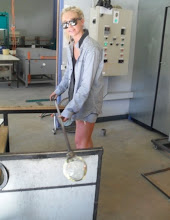
FORMAL DESCRIPTION
The lighting installation is to be installed in Rieby Place, which is positioned between Macquarie Place and Pitt Street. It consists of two wall screens, which are to be positioned against the two building facades facing the laneway. Each screen will be approximately 3 meters in height and 70 meters in length. The screens are to run parallel along the laneway and bend around the façade of each of the buildings. The position of the screen will be at the lower end of the laneway, beginning at the intersection of Pitt Street and Reiby Place, as this end of the laneway has a higher rate of pedestrians and traffic. It also has natural sunlight throughout the entire day making it a lighter, more inviting space. The sun rises in the east and sets in the west, which casts a shadow on the north side of the laneway. This will affect the screens creating a natural environment that is intended. The chosen laneway has a natural flow of wind, which is to be expressed on the screens.
The screens are made of FOLED, meaning Flexible Organic Light Emitting Diode, and are a new innovative technology, which are energy efficient and sustainable. FOLEDs are flexible devices composed of thin films of organic molecules that emit light with the application of electricity. FOLEDs are used as video displays and are extremely lightweight as do not require a backlight to function. This allows the FOLEDs to be extremely thin and use less energy making them more environmentally sustainable.
The FOLED’s screens used in this installation will be a flexible plastic with a thickness of 5mm. The integrity of the façades will not affect by the screens because of their flexibility and weight. The screens will be inspired by some of the drawings and paintings by Australian artists of the early colonial period, and display images of the Australian landscape, similar to what Rieby Place looked like 200 years ago before the white settlement. The screens will play like a short film and display moving trees swaying in the wind. The film will be on a continued repeat making the laneway seem as though you have just stepped back in time, and your standing in a forest.
The installation of the screens will be similar the method of sliding roller doors. The screens will sit flush in between two sets of parallel rails that are position on the floor and wall of the laneway. As the screens bend and curve around the buildings, so to will the rails, which will allow for easy deconstruction of the installation.
CONCEPTUAL DESCRIPTION
Ribey Place is named after Mary Ribey, an English woman who was transported to Australia as a convict but went on to become a successful businesswoman in Sydney.
Mary Reiby’s portrait is now on the modern Australian $20 banknote and is an Australian Icon. Ribey Place is located in Circular Quay, which was originally named Sydney Cove and was discover by Arthur Phillip in 1788. The display on the FOLED screens is to depict the natural Australian environment back in 1788 before white settlement. The screens display a scene of a wild landscape, with all the natural elements effecting the surroundings (Sun, Breeze, Smell, Shadow)
Walking through Circular Quay you decide to enter a laneway as a short cut to reach your destination. You’re in a rush and your mind is racing. Your heart is beating at a fast pace and stress is overwhelming you. Half way down the laneway you begin to notice there is something different. Something appearing on the walls. Luminous shades of green in the shape of leaves cover the façade of the buildings. You find yourself in what appears to be a dense, lust forest. Your imagination drowns the sounds of busy traffic to the point where all you can hear is your own breathing. The sun shines vibrantly through the tall, whimsical trees, which casts playful rays of sunlight down on you. You have been taken out of the busy city and find yourself in an exotic place, full of unfamiliar botanical plants. The branches of trees sway gently in the wind creating dancing shadows, which flood the forest with movement. A sense of ease flows through your body as the breeze suddenly picks up and blows through your hair. The smell of the sea passes you by. Beginning to appreciate this natural world you stand still and alone in the space soaking up all the goodness surrounding you. Your mind is clear and relaxation spreads through your entire body. As you begin to continue with your day the positive experience stays with you. Inside you, not only as a physical transition has taken place, but mentally and emotionally.
The installation of the FOLED screen is to create the scene of a native Australian forest without changing the integrity of the buildings, yet also us of what Sydney Cove looked then and how much it has changed in time. The imagery on the screens of native Australia and extinct plant life are to reminding us of the fragility of our world, as there is only one world and only one chance to make things right.











